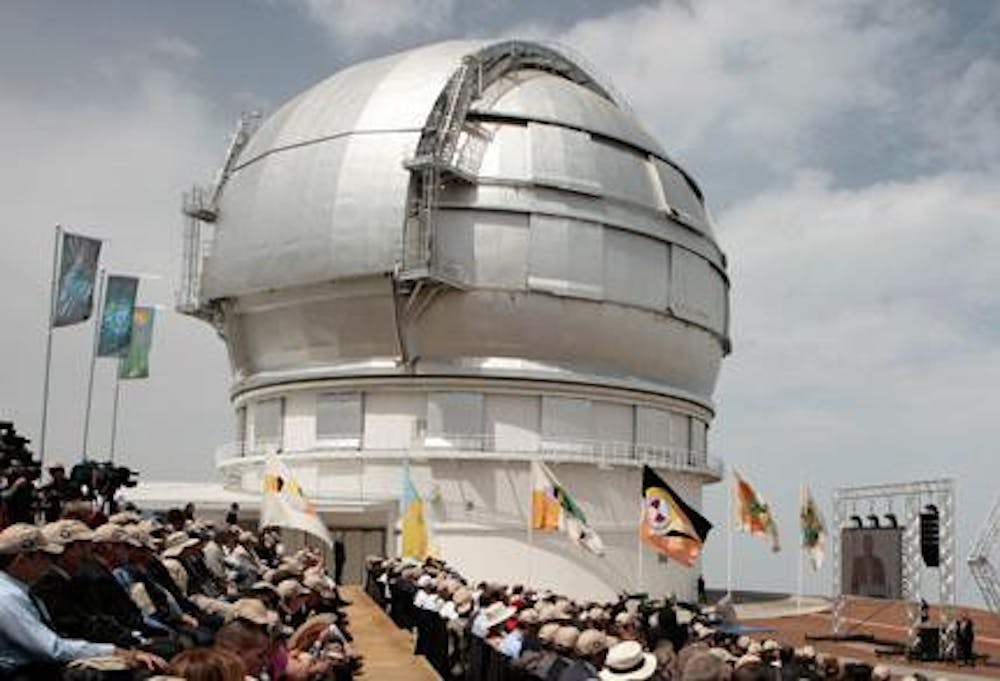Looking through the world/s largest telescope is like seeing something with four million eyes.
The telescope, which was built out of a joint effort by UF astronomers and astronomers from Spain and Mexico, was inaugurated Friday by King Juan Carlos I and Queen Sofia of Spain at the Observatorio del Roque de los Muchachos in La Palma, Canary Islands.
The telescope, named Gran Telescopio Canarias, has the latest technology and instrumentation, including more light-collecting area than any other in the world, said UF astronomy professor Charles Telesco.
Large telescopes usually have one mirror that is distorted by gravity when tilted, he said, but GTC/s mirror is a mosaic of 36 hexagonal segments that can be readjusted to prevent deformation.
The telescope also features a $3.3 million, heat-sensing camera called CanariCam, which was designed and built by UF engineers and scientists, he said.
On the island, air sweeps smoothly across the Atlantic Ocean, and there are no topographical features to cause turbulence, Telesco said.
The telescope, which rests on building only 20 feet shorter than the Statue of Liberty and whose base can hold the weight of 62 elephants, is located atop a 7,874-foot mountain, with clear, dry weather that allows for high-precision images.
UF and Mexico each own 5 percent of the GTC, and Spain owns 90 percent, said Stan Dermott, chairman of UF/s astronomy department.
The university contributed about $5 million to the $180 million project.
The project is part of the campaign to internationalize the university, according to Dermot.
Although this ownership commits the university to 5 percent of all expenses, it also entitles the astronomy department to about 20 days of observation each year, Telesco said.
The privilege of guaranteed access was the main reason for joining the project, he said.
"It was natural for us to get involved in this Spanish telescope because of the Hispanic connection we have here in Florida," Telesco said.
Eric Ford, assistant professor in the department of astronomy, was one of the first to make observations with the GTC.
From Gainesville, he instructed experts at the site to perform operations and send the images to him over the Internet.
The uncertainty of using a new telescope made the experience suspenseful and exciting, he said.
"It/s really nerve-wracking," Ford said. "You/re checking every little detail every five minutes, and you know you/ll either make it or break it."
But the observation turned out a success, he said. A Jupiter-sized planet following a nearly circular orbit around a star was observed.
According to Ford, the telescope will primarily be used to learn about the formation and evolution of planets and to gain an understanding of how the solar system fits into the universe.
He also mentioned studying young stars, the center of galaxies, black holes and star-forming regions surrounded by dust.
The key hope is to find something that is unknown to mankind, Dermott said.
"This university has a desire to be a top 10 state university," he said. "For that desire to be met, it is essential that we involve ourselves in top-notch projects like this one."






